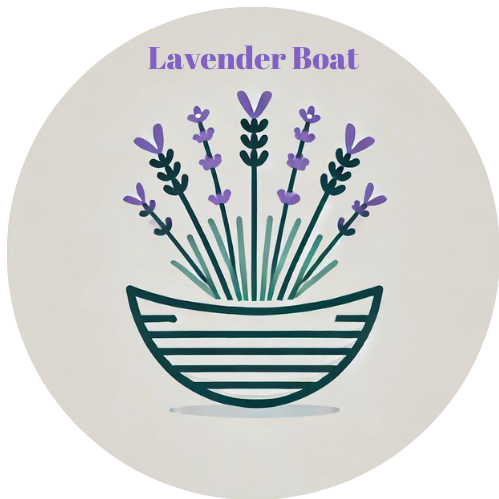A guide to learn how to relieve inflammation. Lavender possesses strong antifungal and antibacterial properties that help fight infections, prevent harmful bacteria and fungi growth, reduce inflammation, and speed healing. Its active compounds like linalool and linalyl acetate make lavender highly effective against common funguses, bacteria, and inflammatory conditions when used aromatically, topically, or internally.
Listen to this guide
or read on …
The Potent Antifungal and Antibacterial Powers of Lavender for Natural Healing
Lavender is one of the most beloved and well-known medicinal plants on earth. This fragrant purple flowering botanical has been used therapeutically for over 2500 years. Today, lavender essential oil continues to be one of the most popular essential oils for aromatherapy, natural medicine and holistic healing.
Beyond its floral beauty and pleasing fragrance, lavender contains an abundance of bioactive compounds that make it profoundly antimicrobial. Lavender demonstrates potent antifungal and antibacterial properties that are now being confirmed by growing scientific research.
By unlocking lavender’s antimicrobial powers, this versatile botanical can be used to help treat common infections, prevent the spread of harmful microbes, reduce inflammation, speed healing, and enhance overall wellness.
Exploring Lavender’s Antifungal Properties
Numerous studies have shown lavender exhibits strong antifungal activities against many pathogenic fungi. Research indicates lavender oil, and its constituents inhibit the growth and spread of fungal cells.
Lavender oil has antifungal effects against over 10 common fungi varieties, including:
- Candida albicans – the fungus that causes oral thrush, vaginal yeast infections and candida overgrowth syndrome.
- Trichophyton rubrum – a common cause of athlete’s foot, ringworm, jock itch and fungal toenail infections.
- Aspergillus niger – a mold that can cause respiratory illness and fungal sinusitis.
- Cryptococcus neoformans – a yeast-like fungus that causes serious lung and brain infections.
- Tineacapitis – the fungus responsible for dandruff and seborrheic dermatitis of the scalp.
Research
Lab research
demonstrates lavender oil damages the cell walls of candida fungus and inhibits hyphal growth by up to 61% within just 15 minutes of treatment.
Other studies found the major antifungal compounds in lavender are linalool and linalyl acetate. These phytochemicals disrupt cell membrane formation and permeability in fungi cells, suppressing growth and spread.
Geranyl acetate is another antifungal component of lavender oil, which exerts toxicity
against candida cells by reducing metabolic activities.
Research confirms bathing in lavender oil for just 10 minutes can significantly reduce fungal overgrowth on skin affected by tinea pedis and tineacruris infections (athlete’s foot and jock itch).
Applying lavender oil directly to fungal-infected nails, skin and scalp can help treat athlete’s foot, ringworm, dandruff, candida rashes and nail fungus due to its topical antifungal actions.
Diffusing lavender oil can also protect against airborne fungal spores. The vapours sanitize the air to prevent mould overgrowth and respiratory infections.
Exploring Lavender’s Antibacterial Properties
In addition to being potently antifungal, lavender also exhibits broad-spectrum antibacterial properties. Multiple studies confirm lavender demonstrates powerful bactericidal effects against a range of infection-causing bacteria.
According to research, lavender oil displays antibacterial activity against over 100 strains of bacteria, including:
- Staphylococcus aureus – Gram-positive bacteria that causes staph infections.
- Streptococcus pneumonia – Gram-positive bacteria that causes strep throat, pneumonia, and meningitis
- Klebsiella pneumonia – Gram-negative bacteria that often causes hospital-acquired infections like pneumonia.
- Escherichia coli – Gram-negative bacteria that cause food poisoning, UTIs and sepsis.
- Salmonella – Gram-negative bacteria that cause salmonella poisoning and typhoid fever.
- Bacillus cereus – Spore-forming bacteria that cause foodborne illness.
Studies found lavender oil damages the cell membrane of bacteria, which inhibits growth and replication. The main antibacterial compounds responsible are linalool, linalyl acetate, and ocimene.
Research
also discovered lavender oil worked as a natural antibiotic against several drug-resistant “superbugs”. This included methicillin-resistant Staphylococcus aureus (MRSA).
Due to its immune-boosting antibacterial powers, lavender can help prevent and treat upper respiratory tract infections. Diffusing lavender oil may protect against pneumonia, sinus infections, strep throat, bronchitis, coughs and colds.
Lavender oil can also guard against autoimmune conditions like Lyme disease by targeting the bacteria Borrelia burgdorferi.
The antibacterial effects of lavender may also prevent urinary tract infections when taken orally.
How to Relieve Inflammation for Antimicrobial Benefits
There are several evidence-based ways to use lavender oil to harness its antifungal and antibacterial powers:
- Diffuse 5-7 drops in your home to cleanse airborne microbes and prevent infections.
- Add 8-10 drops to bath water to treat fungal skin and nail infections.
- Dilute 2-3 drops with coconut oil and apply to affected skin areas 2-3 times a day to treat fungal and bacterial infections topically.
- Add 5 drops to gentle cleanser or make homemade lavender soap bars.
- Put 2-3 drops on cotton ball and swipe over the skin to sanitize.
- Make a surface cleaner with 10-15 drops of lavender oil mixed with water and vinegar to disinfect countertops and appliances.
- Add 5 drops to laundry to kill bacteria lingering on clothes and linens.
- Rub 2-4 drops over pulse points to repel insects and prevent mosquito and tick-borne illnesses.
- Diffuse 7-10 drops in the bedroom to sanitize air and linens for enhanced sleep and immunity.
- Add 2 drops to honey and ingest to treat oral thrush and candida overgrowth.
Lavender’s Anti-Inflammatory, Analgesic and Wound Healing Powers
In addition to its profound antimicrobial effects, studies show lavender also reduces inflammation, eases pain and accelerates healing throughout the body.
Lavender’s antioxidant compounds called polyphenols and flavonoids help reduce swelling, joint pain, redness, and irritation associated with inflammatory conditions like arthritis, muscle strain, and eczema.
Topically applying lavender essential oil eases muscle and joint soreness caused by injuries or overexertion. Its analgesic effects also help relieve pain after surgeries.
The anti-inflammatory benefits also extend to upper respiratory conditions like asthma, allergies, coughs, and sinus congestion when inhaled or diffused.
Extensive research also demonstrates how to relieve inflammation with lavender oil enhances wound healing and tissue regeneration. Applying lavender topically speeds recovery from cuts, burns, scrapes, and postoperative wounds by enhancing new cell growth and protein synthesis.
Inhalation also accelerates wound closure, helping both surface wounds and internal healing after surgery.
One study confirmed lavender applied after a C-section birth significantly accelerated wound healing.
Scientists
believe lavender supports faster tissue healing by:
- Increasing collagen production
- Improving blood circulation
- Reducing scar formation
- Having antioxidant, anti-inflammatory actions
- Stimulating immune cells called macrophages.
Precautions When Using Lavender Oil
Please when considering how to relieve inflammation – though generally very safe, be aware lavender oil can cause side effects like skin irritation, headache, or nausea in some individuals. To avoid this:
- Always dilute the essential oil in a carrier oil like coconut or jojoba oil before applying topically.
- Conduct a patch test on a small area of skin first to check for allergic reaction.
- Only ingest 1-2 drops max of food-grade lavender oil – and only under the guidance of an aromatherapy professional.
- Avoid contact with sensitive mucous membranes and eyes.
- Start with small doses and increase concentration gradually as tolerated.
- Talk to your doctor before using if you take sedatives or sleep medications due to potential interactions.
- Don’t use lavender oil 2-3 weeks before any scheduled surgery since it can inhibit platelets.
Final Thoughts
I hope you have enjoyed this guide on how to relieve inflammation. In summary – Lavender essential oil is a potent antimicrobial that can be used to cleanse, protect, and heal the body naturally. Its antifungal, antibacterial and anti-inflammatory properties make lavender extremely versatile for boosting immunity, fighting infection, soothing inflammation, and speeding healing. With responsible and proper use, this beautiful botanical can be used as a safe, gentle way to incorporate the therapeutic wisdom of nature into everyday life.







